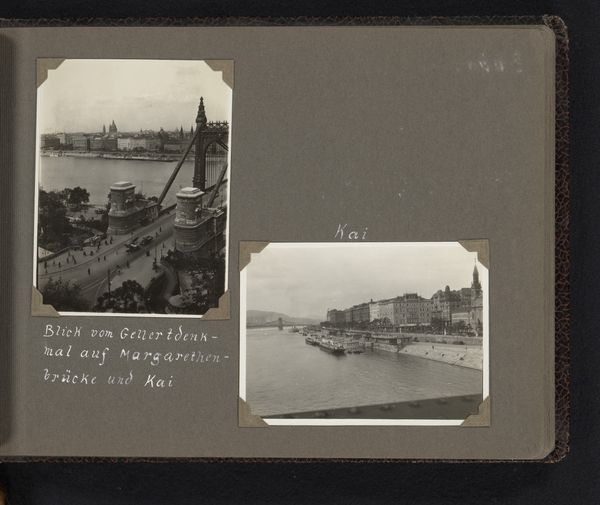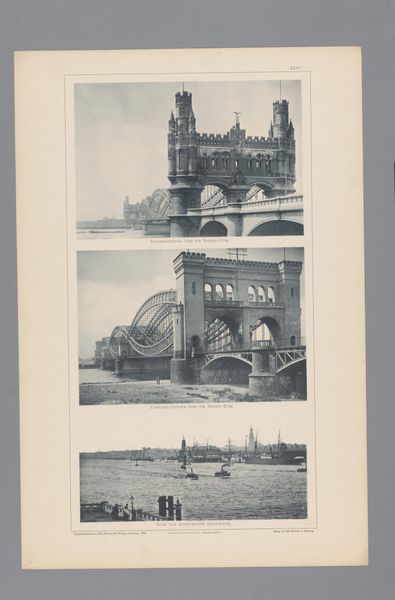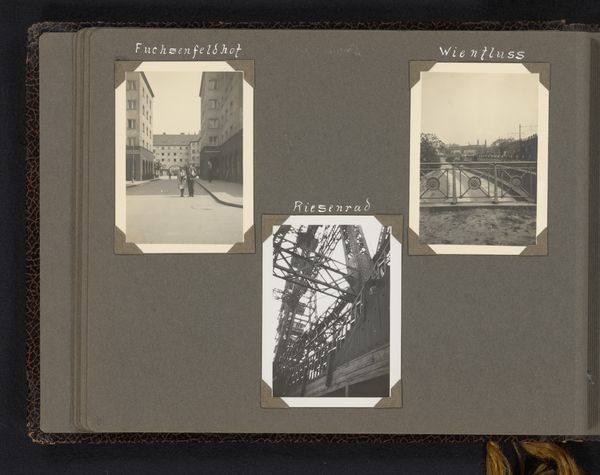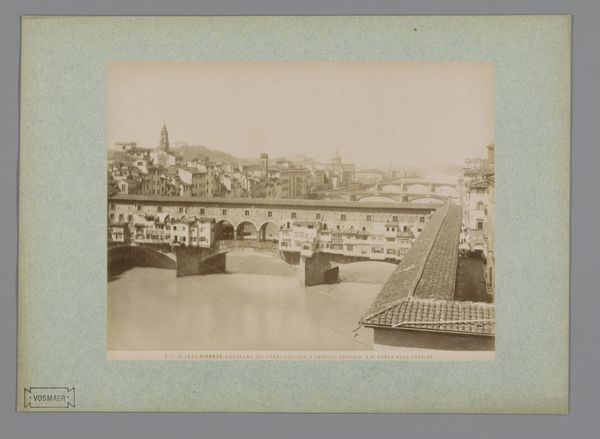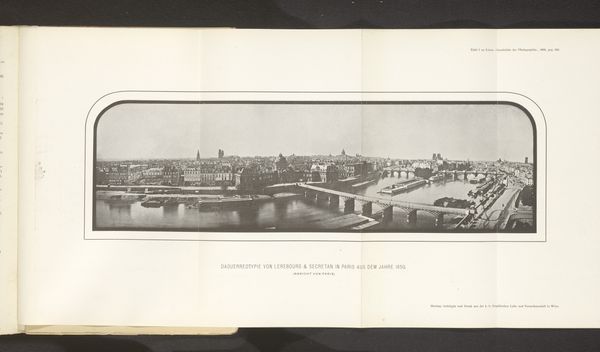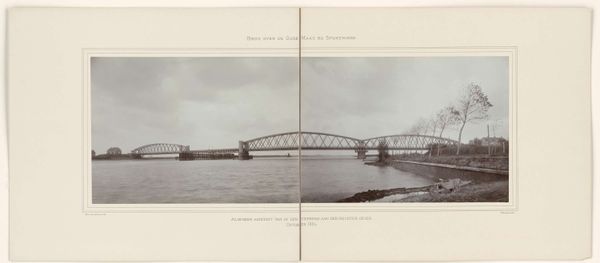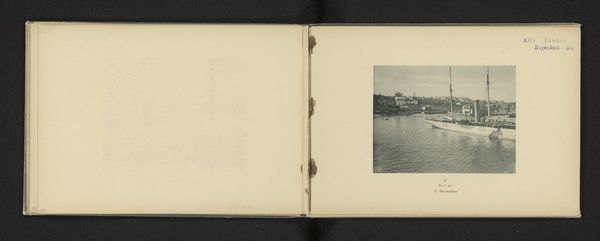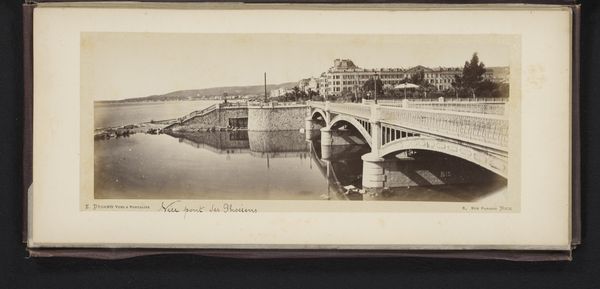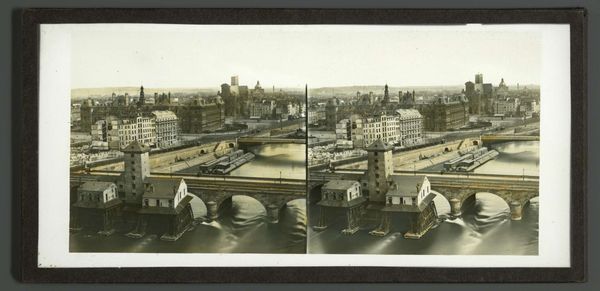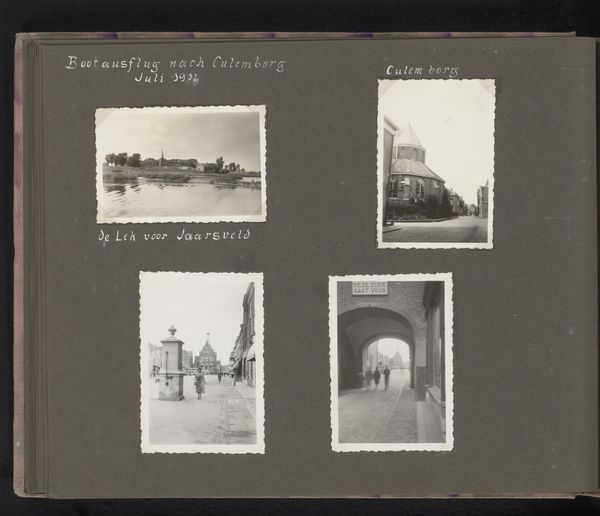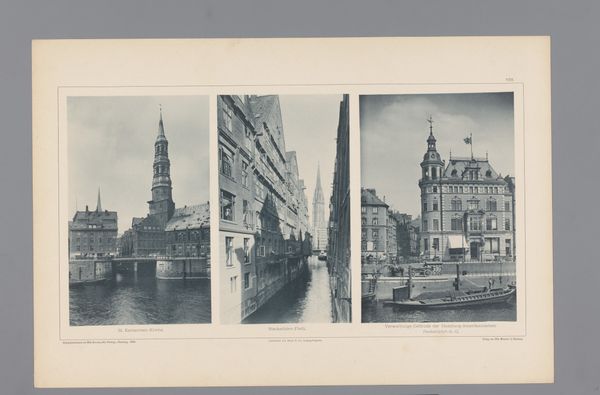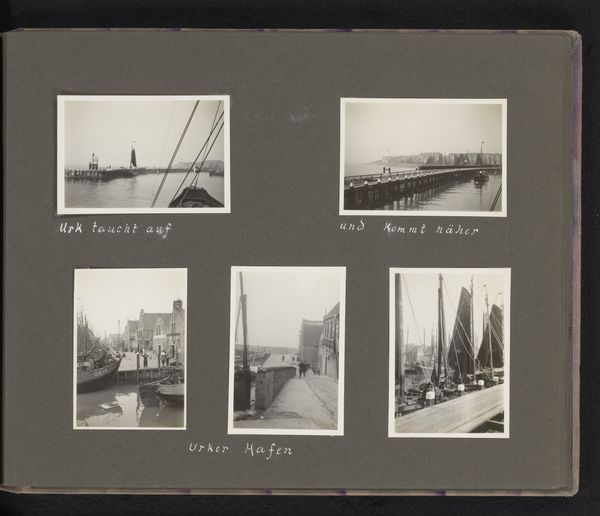
print, photography, photomontage
# print
#
sculpture
#
landscape
#
river
#
photography
#
photomontage
#
mixed media
Dimensions: height 190 mm, width 265 mm
Copyright: Rijks Museum: Open Domain
Curator: So, here we have Berti Hoppe’s "Gezichten op Esztergom en de brug bij Komárom," dating from around 1930-1931, a piece classified as a photomontage. Editor: My first impression? There's a somber, almost melancholic feel to these juxtaposed images. The bridge on the left looks very utilitarian, while the cityscape on the right feels classical and imposing. Curator: The starkness of the photographs emphasizes the physical realities of these locations. The bridge, an engineered construction, connecting one space to another. The basilica, constructed from perhaps quarried materials, as an architectural manifestation of faith and power. I’m particularly interested in the way these photos are pasted into an album, drawing our attention to how it’s created, the labor that went into its production and eventual circulation. Editor: I'm thinking about what this composite says about the period. It's bookended in time between the World Wars. The image creates a dialogue between industrial progress and established authority, all within the frame of a changing geopolitical landscape, and evokes the power of borderlands and shifting nations. Curator: Exactly. And Hoppe's deliberate choice to combine these distinct views through photomontage raises questions about representation. Is this about recording factual information or presenting a carefully constructed perspective? This presentation seems less about the aesthetics and more about a constructed narrative. Editor: Agreed. And the book itself! Think about who had access to photography, the leisure time to compile such an album… it speaks volumes about social standing and how visual culture was consumed, preserved, and distributed. These aren't snapshots in the digital age, but curated memories designed to communicate something specific. Curator: This album page, almost like a proto-Instagram feed, functions as both document and political statement. It reflects the social tensions inherent to interwar Europe, where modern advancements stood against the backdrop of crumbling empires. Editor: I see it. It also makes one consider how this collection would shape perspectives of home, and of national identity itself, particularly amidst territorial disputes, influencing national self-perception, and also of any 'other' neighboring community and space. Curator: For me, engaging with the physical presence of the work lets me dive into production processes and materiality. Editor: And stepping back allows insight into socio-political history and its lasting visual influence. Fascinating!
Comments
No comments
Be the first to comment and join the conversation on the ultimate creative platform.
